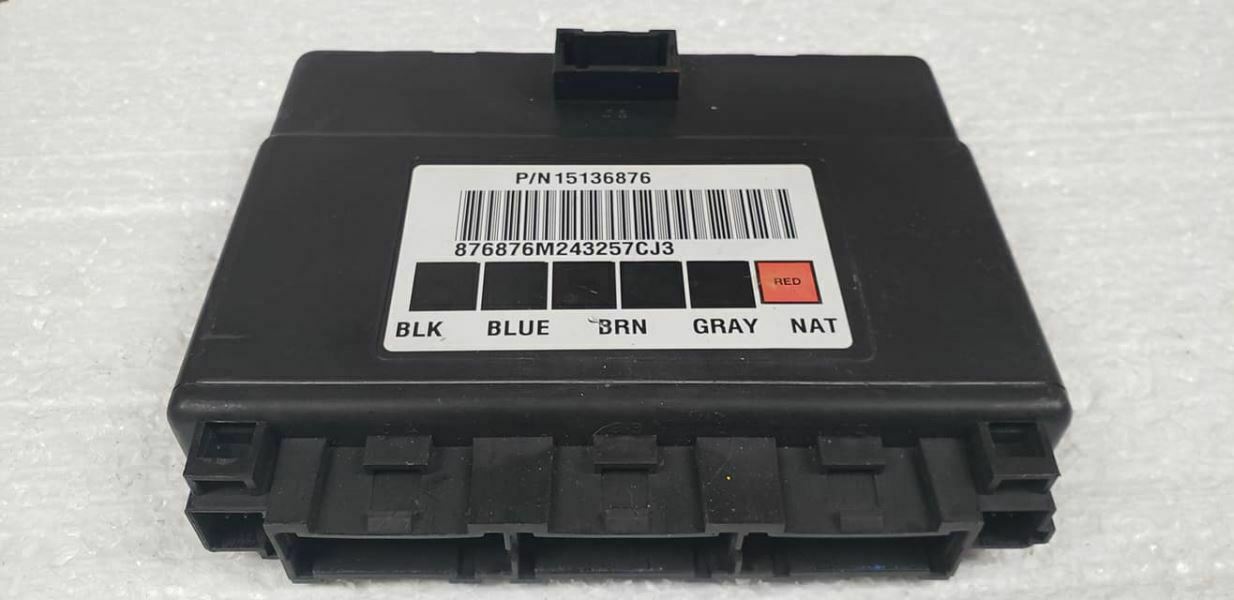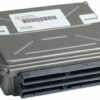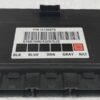Restore Your Truck’s Electrical Functions and Reliability
Are you chasing down frustrating electrical gremlins in your GM truck or van? Flickering dash lights, power windows with a mind of their own, or a security light that prevents your vehicle from starting are all classic signs of a failing Body Control Module (BCM). The BCM is the central hub for your vehicle’s body electronics, and when it fails, it can cause a cascade of bizarre, seemingly unrelated issues. This isn’t just an annoyance; it’s a reliability problem waiting to leave you stranded. Stop throwing parts at the problem and get the definitive solution.
A Technician’s Notebook: The Silverado Ghost
I remember a 2006 Silverado 2500 that came into my bay with a complaint of intermittent no-start and the radio and power locks working sporadically. The owner had already replaced the battery and checked the alternator. When I connected my scan tool, I found a slew of U-codes (communication codes), specifically a U0140, indicating a loss of communication with the BCM. Instead of a complex wiring issue, the culprit was the BCM itself. Internal circuit board failures on these modules are common after years of heat cycles and vibration. We replaced it with a VIN-programmed unit like this one, and all the electrical ghosts vanished. It’s a fix I’ve performed hundreds of times, and it restores the vehicle’s core functionality every time.
Is Your GM Truck or Van Showing These Signs?
A failing BCM can manifest in many ways. If you’re experiencing any of the following, this module is likely the solution you need:
- ✔ Erratic or non-functional power windows, door locks, or interior lighting.
- ✔ The security or anti-theft light stays on, causing a no-start condition.
- ✔ Horn honking unexpectedly or not working at all.
- ✔ Dashboard warning lights (like ABS or Airbag) illuminating for no reason.
- ✔ Diagnostic trouble codes (DTCs) related to lost communication, such as U0140, U0155, or U0164.
- ✔ Wipers or radio turning on and off by themselves.
The Smart Solution: A VIN-Programmed 2003–2007 GM BCM
Forget the expensive trip to the dealership. We take the hassle out of the repair by programming this BCM specifically for your vehicle using your VIN. This ensures it has the latest GM software updates and is ready for installation right out of the box. You get a reliable part that communicates flawlessly with your vehicle’s other systems, all without paying for dealer programming or diagnostic time. Plus, with no core charge, you can keep your old part without the hassle of shipping it back.
A Straightforward Guide to BCM Installation
Installing your new BCM is a manageable job for a DIYer with basic tools. The location varies slightly between trucks and vans, but the process is similar.
- Safety First: Always disconnect the negative terminal from your vehicle’s battery and wait a few minutes before starting work.
- Locate the BCM: On Silverado and Sierra pickups, it’s typically found under the driver’s side of the dashboard, near the steering column. On Express and Savana vans, it’s usually behind the center dash panel.
- Remove Trim Panels: Carefully remove any plastic trim or panels necessary to access the module.
- Disconnect and Remove: Unplug the electrical connectors from the old BCM. They have locking tabs that need to be depressed. Once disconnected, unbolt or unclip the module from its mounting bracket.
- Install the New BCM: Mount the new module in the same location and securely plug in all the electrical connectors. You should hear a click as they lock into place.
- Reconnect and Test: Reconnect the negative battery terminal. Turn the key to the ‘ON’ position (without starting) and test your lights, locks, and windows to ensure proper function before reassembling the dash panels.
Important Post-Installation Notes
In some cases, your vehicle may require a simple relearn procedure after installation. These are straightforward and often necessary for safety systems to sync correctly.
- Airbag System Sync: If your airbag warning light is on after installation, a professional scan tool is needed to perform the ‘Setup SDM Primary Key in BCM’ procedure. This syncs the new BCM with the airbag system.
- Brake Pedal Position Relearn: Some models may require a brake pedal position sensor relearn to ensure brake lights and traction control function correctly. This can also be done with a capable scan tool.
Disclaimer: Procedures can vary. Always consult a factory service manual or a qualified technician if you are unsure.
Will This Fit My Truck or Van?
This BCM is a direct replacement for part numbers 15167329, 15194169, 15747545, 15136224, 15116065, 15198115, 15136876, and 10367689. It is guaranteed to fit the following models (excluding certain options as noted):
- 2003-2006 Chevrolet Silverado & GMC Sierra 1500 (exc. Crew Cab)
- 2007 Chevrolet Silverado & GMC Sierra 1500 ‘Classic’ (exc. Crew Cab)
- 2003-2006 Chevrolet Silverado & GMC Sierra 2500/3500 (exc. Crew Cab)
- 2007 Chevrolet Silverado & GMC Sierra 2500/3500 ‘Classic’ (exc. Crew Cab)
- 2003-2007 Chevrolet Express & GMC Savana 1500/2500/3500 Vans
- 2003-2006 Chevrolet SSR
Frequently Asked Questions
Do I need to program this BCM?
No! We program the module to your vehicle’s VIN before shipping. It arrives ready to install, saving you a trip to the dealer.
What is a VIN and where do I find it?
The VIN is your 17-digit Vehicle Identification Number. You can find it on your driver’s side dashboard (viewable through the windshield), on your door jamb sticker, or on your vehicle’s registration and insurance documents.
Is there a core charge for this part?
No, there is no core charge. You are not required to send your old BCM back to us.
What if the airbag light comes on after I install it?
This is not a sign of a defective part. It simply means the new BCM needs to be synced with the airbag module using a professional scan tool. This is a standard procedure called ‘Setup SDM Primary Key in BCM’.
Where is the BCM located on my vehicle?
On Silverado/Sierra pickups, it’s typically under the driver’s side dash. On Express/Savana vans, it’s usually in the center dash area. On the SSR, it is also under the dash.



